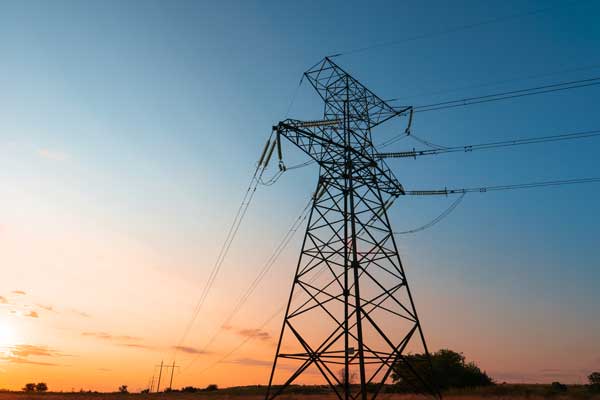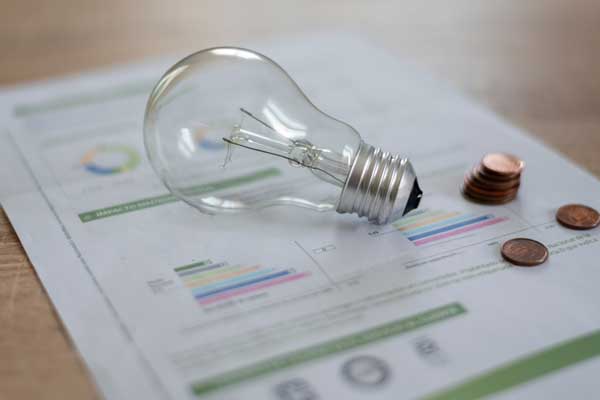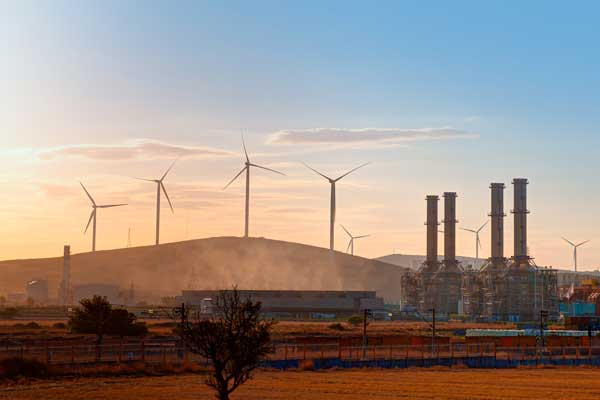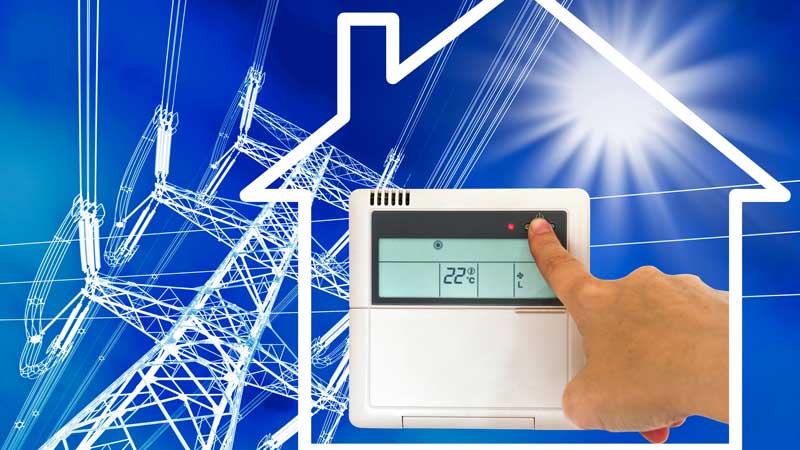AIBE Explainer Series
The AIBE Explainer series provides a breakdown of some of the key economics issues facing Australians today. This explainer has been written by our Director Professor Flavio Menezes and Research Fellows Dr Patrick O'Callaghan and Dr Tina Rampino.
Electricity plays a big part in our daily lives
Australian households use electricity daily for lighting, heating, cooling, and electronic appliances that make life easier.
Electricity is also a fundamental input into the production of many goods and services, including those essential to life such as food production, clean water, sanitation, and health care.
After several years of declining electricity prices, we will shortly experience sharp price increases. In the second instalment of this new AIBE series, we will explain how electricity prices are determined, and why they are increasing. We cover:
- What do electricity pricing plans look like?
- How are the electricity prices paid by consumers determined?
- Prices are going up because energy costs are going up
- Why are energy costs increasing?
- Electricity prices and the energy transition
- The bottom line
What do electricity pricing plans look like?
In many parts of Australia, residential consumers can choose from different electricity pricing plans offered by a large number of retailers. For example, there are 105 authorised electricity retailers in Queensland, mostly operating in the South East. These electricity plans need to comply with a range of legal requirements in terms of information and marketing set out under the National Energy Customer Framework and the Australian Consumer Law.
There are many pricing plans available. Figure 1 below is an example of a standard plan, which includes a flat tariff - applied at all times of the day, a Controlled Load 2 tariff per kWh - used for pool pumps and hot water, and available for a minimum of 18 hours each day and measured from a separate accumulation meter, a charge of $1.089 per day independently of consumption, and in the case of the bill below, a solar feed in tariff of $.08 per kWh.
This consumer has solar panels in their house and has received a total of $43.68 from exporting to the grid during the billing period. The total bill for this consumer amounts to $472.84 (just add the last column), but this may not be the total amount due, as many retailers have pay-on-time discounts which could be as high as 25%.
For context, a dishwasher may require 1.5kWh to run a load of dishes. If this customer runs the dishwasher when the sun is shining, they forgo 12c, whereas it will cost then 42c if they run the dishwasher with electricity from the grid. This does not seem too bad, except that these rates will go up.
Figure 1: Sample electricity plan
| Usage and supply charges | Units | Price | Amount |
|---|---|---|---|
| Peak | 1298 kWh | $0.28028 | $363.80 |
| Controlled Load 2 | 204 kWh | $0.23617 | $48.18 |
| Daily charge | 96 days | $1.08900 | $104.54 |
| Solar rebate | 546kWh | -$0.0800 | $43.68 cr |
In addition to the flat tariff described above, electricity retailers offer other tariffs that vary depending on the time of consumption, typically charging higher tariffs at the peak times between 3pm and 9pm, and lower tariffs off-peak.
How are the electricity prices that consumers pay determined?
To understand why prices to consumers will increase, we need first to understand how electricity prices are determined. Retail electricity markets in South East Queensland, New South Wales, Victoria and South Australia exhibit many competitive characteristics. In competitive markets, prices reflect the cost of supply, which mostly fall into 3 categories, explored below.
1. Network costs

Network costs are those incurred in the transport of electricity from the source of generation to the consumer's premises. Network costs are determined by the Australian Energy Regulator (AER) and set for a period of 5 years. For example, for customers in south east Queensland, the AER set the distribution tariffs for the period 2020 to 2025, and the average yearly residential bill would have dropped by $73 in the first year of the determination (not including the cost of the Solar Bonus Scheme).
2. Retail costs

Retail costs include those associated with providing customer services such as call centres, metering consumption and billing. It also includes costs associated with meeting obligations under the National Energy Customer Framework, including those associated with developing, implementing and maintaining a customer hardship policy. This policy aims at identifying residential customers experiencing payment difficulties due to hardship and assisting such customers to manage their energy bills.
3. Energy costs

Energy costs are those incurred in the purchase of electricity from the wholesale spot market, and the costs associated from hedging against volatility. Retailers buy electricity at a price that changes every 5 minutes but sell mostly at fixed prices as illustrated in the example above. Energy costs also include those associated with compliance with 'green schemes'.
Electricity retailers that purchase energy in the wholesale market enter into financial contracts to hedge price volatility, pay for the transportation of electricity through the distribution and transmission networks to the final consumer, meter consumption and issue bills.
Retailers then offer electricity pricing plans that include costs and generate a profit margin. Electricity bills reflect these various costs. The estimates for the percentage shares of these 3 types of costs for a small customer's bill in south east Queensland are: 38% for network costs, 41% for energy costs, and 18% for retail costs.
Figure 2: Costs contributing to a small customer's electricity bill
Prices are going up because energy costs are going up
By looking at what is likely to happen to the 3 key components of retailers' costs we can find out why electricity prices will likely increase. Retail costs are likely to increase over the next 12 months due to inflation. But these increases are likely to subside and be relatively modest. Network costs are fixed for the period 2020 to 2025 and so will not contribute in any significant way to rising prices. All the action is around energy costs.
Figure 3: Quarterly average wholesale electricity spot prices (National Electricity Market)
In the second quarter of 2022, the average wholesale spot price was $264 per megawatt-hour (MWh) (see Figure 2). This was more than twice the previous peak of $130/MWh from the first quarter of 2019 (not shown above). This is more than 200% higher than the average price of $85/MWh recorded 12 months before. High and volatile spot prices led to the unprecedented suspension of the operation of the National Electricity Market (NEM) between 15 June and 24 June 2022.
Figure 5 shows a similar trend in all NEM jurisdictions, with Queensland exhibiting the highest average prices since the first quarter of 2021.
Figure 4: Average wholesale electricity spot prices by NEM region
In addition to purchasing electricity from the spot market, electricity retailers also purchase financial contracts to insure against high and volatile prices. Contract prices inevitably reflect the cost of supply. Indeed, Australian Stock Exchange electricity futures for the 2023 calendar year have increased from $49/MWh at the end of the second quarter of 2021 to $94/MWh at the end of the first quarter of 2022. That is, market participants expect prices to continue to be high for at least another year. Taking into account the fraction of a consumer’s bill that is attributable to energy costs, a 100% increase in energy costs could translate to an increase of more than 20% in their electricity bills.
Why are energy costs increasing?
Generators in the NEM submit their bids (offers of how much electricity to supply at different prices) at 5-minute intervals, and the market price is determined by the lowest bid-price where supply equals demand.
As a matter of economics, for a given supply, higher demand implies a higher market price. Conversely, for a given demand, lower supply also implies a higher market price. A lower supply can result from higher production costs or from an interruption in production due to breakdown or to scheduled maintenance.
Russian invasion of Ukraine

Since the first quarter of 2022, the wholesale market has been hit by a perfect storm of supply and demand shocks.
- Coal and gas prices increased substantially as result of the Russian invasion of Ukraine and the sanctions imposed on Russia, adding to coal supply constraints caused by recent flooding.
- While Australia is a net exporter of coal and natural gas, domestic prices are tied to international prices. Higher fuel prices mean higher costs for generators, which in turn increases the prices bid to supply the same quantity as before.
Reduction in coal-fired generation

Electricity supply has also been adversely affected by a significant reduction of coal-fired generation because of both scheduled maintenance and unplanned outages. The decrease in coal-fired generation led to an increase in gas-fired generation, adding further pressure on local gas markets.
High demand due to record temperatures

To make things worse, there have been significant instances of high demand for electricity over the last two quarters, including due to high record temperatures in northern and central Queensland in early March and unseasonably cold weather in late May and early June. For example, the Central Queensland town of Mackay experienced its hottest March night on record. The cold outbreak saw a new second quarter record electricity demand for Queensland, and the highest second quarter demand for Victoria since 2011.
Electricity prices and transition to net zero

The pathway to net zero starts with the decarbonisation of the electricity sector, which is a massive undertaking. To achieve net zero by 2050, we will need an 800% increase in large-scale wind, solar and hydro generation (and storage) as well as a corresponding increase in the transmission network to accommodate this additional capacity.
While electricity prices in a sector dominated by renewables will be low, as the cost of producing one additional MWh of electricity from solar or wind is zero, we are facing a very messy transition. This is partly the result of a lack of a coherent energy policy, with states and the federal government making significant financial commitments through a myriad of mostly uncoordinated initiatives.
The last two quarters have shown that climate change itself –with more floods and extreme temperatures – will place additional pressures on an electricity sector that is undergoing transformational change.
The bottom line
The bottom line is that respite for electricity consumers is not going to happen anytime soon.
For those with rooftop solar (or who can afford to install it), changing consumptions patterns to take advantage of this lower cost source of electricity is a no-brainer.
More broadly, most consumers’ actions are limited to shopping around to find an electricity pricing plan that is best suited to their needs and pursuing energy savings through energy efficient appliances and modifying consumption patterns.
Fair, promising and feasible futures
At the Australian Institute for Business and Economics, we work with partners in business and government toward fair, promising and feasible futures. Learn more about us.
If you have any suggestions for future explainers, contact us at aibe@uq.edu.au.



